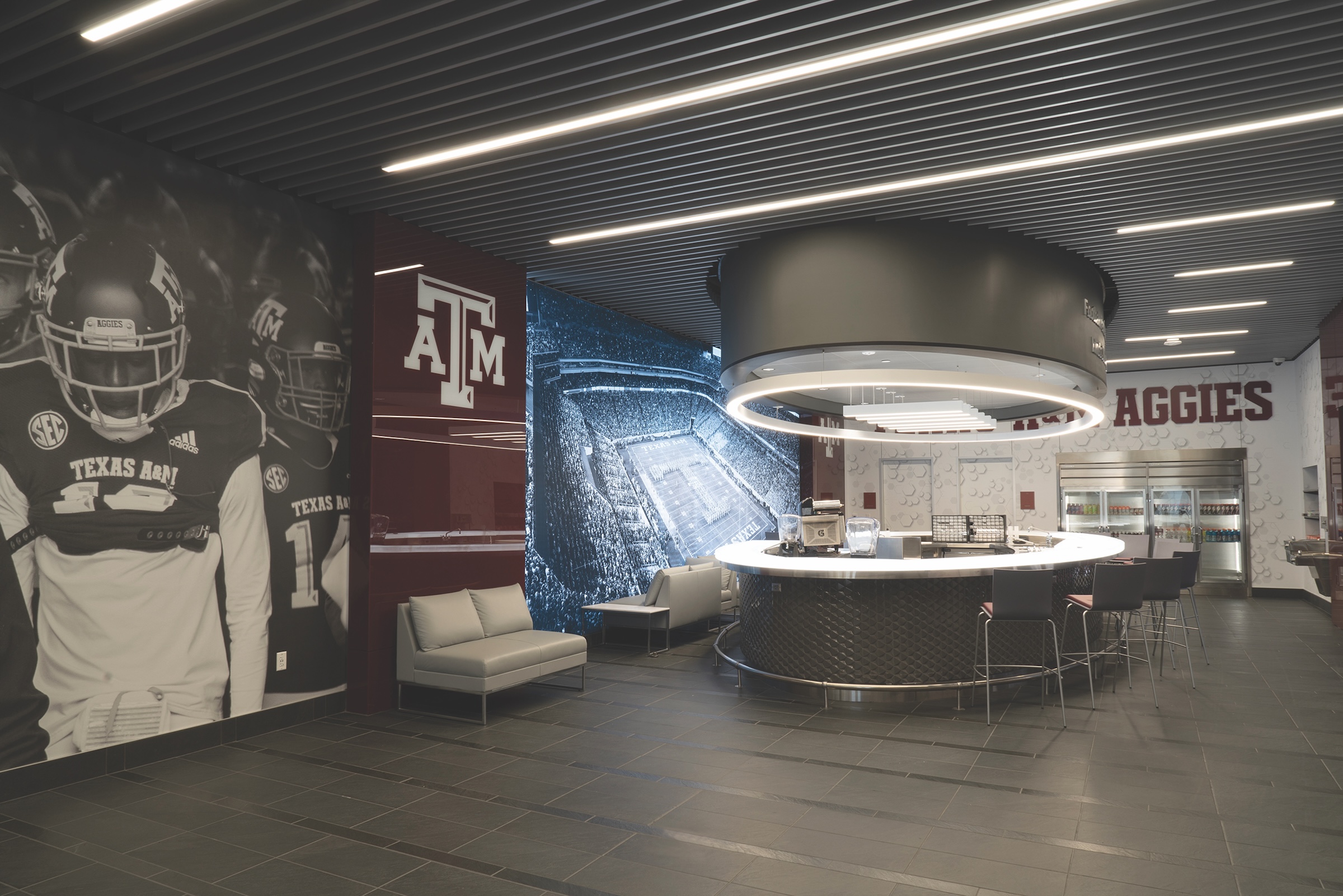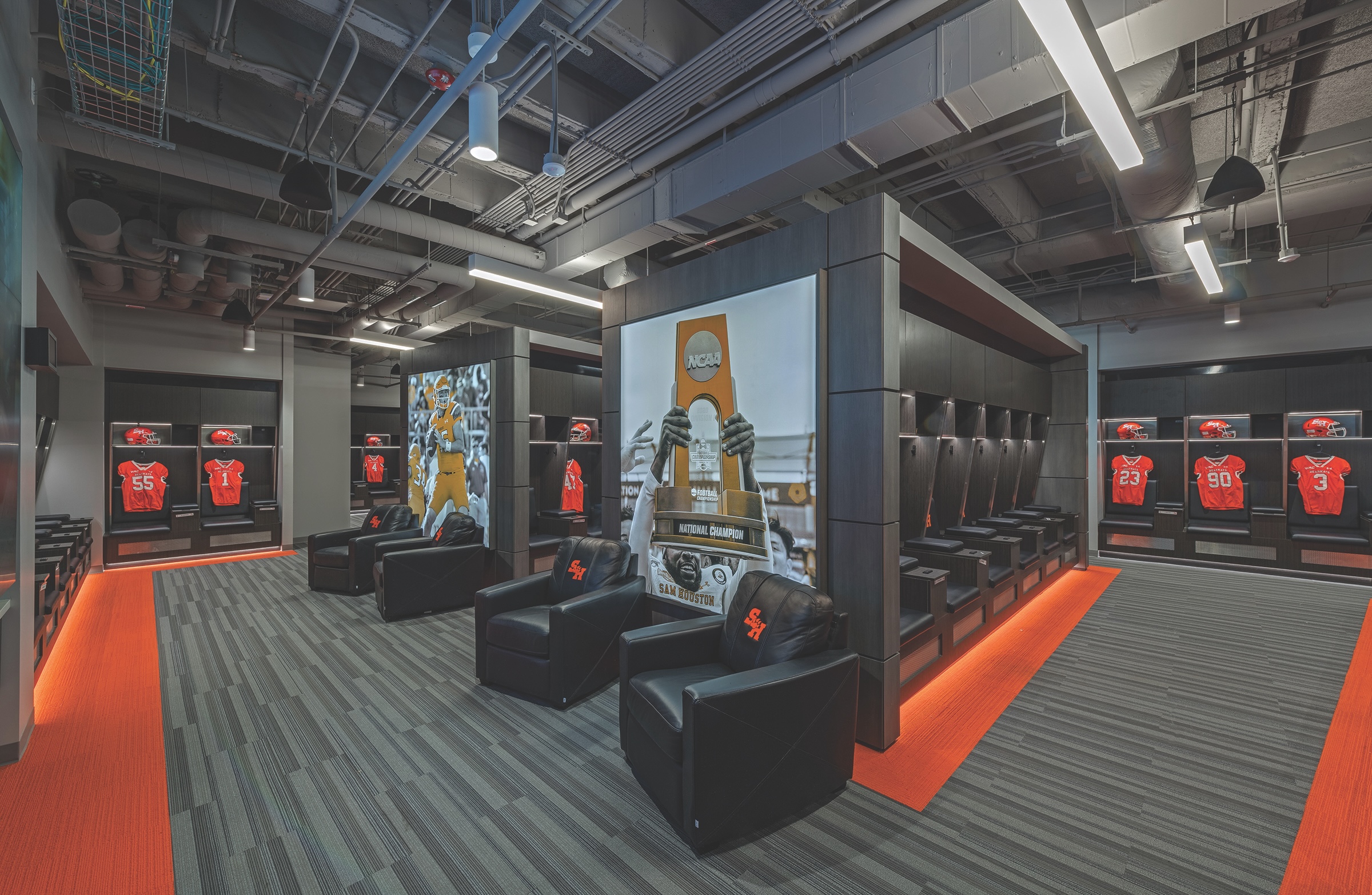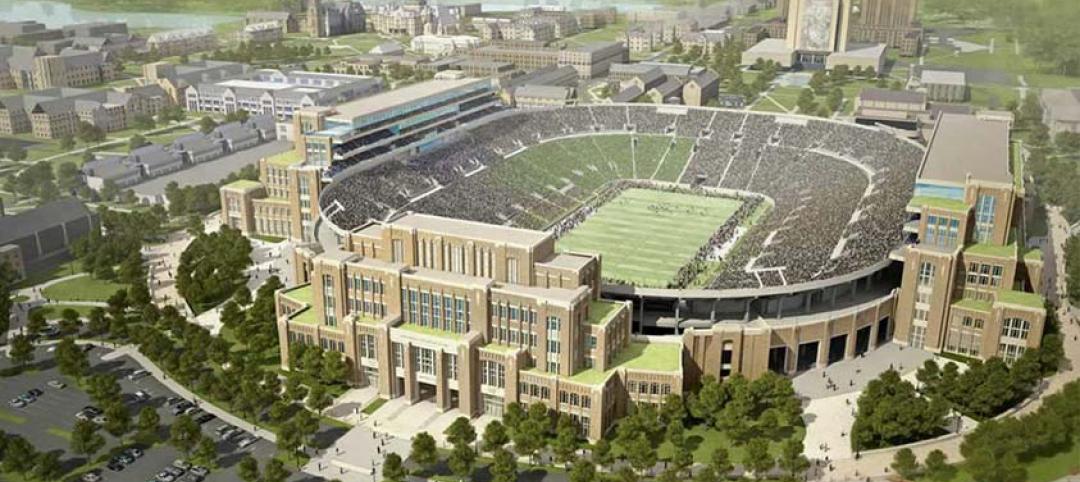Since July 1, 2021, student-athletes in most states have had the right to control the use of their names, images, and likenesses (NIL) for marketing and publicity purposes, and be compensated for that usage while maintaining their amateur status to continue playing for their college teams.
This change has led colleges and universities to strike NIL deals with businesses and advertisers, through which individual athletes can negotiate. Booster groups, like alumni associations, have also formed NIL Collectives that raise money from NIL agreements that is made available to students in exchange for using their persona. Sweeter deals can motivate student-athletes to transfer, which complicates teams’ recruiting and roster-building objectives.
NIL policies have raised expectations among student-athletes about the quality of sports training and performing facilities, in ways that present new design, renovation, and construction opportunities for AEC firms with sports practices.
“Schools’ facilities need to be more competitive, and find revenue-generating solutions,” says Sean Plunkett, Managing Principal with PBK Sports, a division of PRK Architects, which has pursued this avenue for higher ed business. He’s seeing more modifications to campus sports venues that create different experiences, such as pay tiers for seating, tailgating, and food and beverage.
On August 22, BD+C interviewed Plunkett and Melvin Robinson, who had recently joined PBK Sports as National Director of Sports Client Engagement. Robinson’s resume includes nearly 15 years with the University of Georgia Athletic Association, with stints as Director of Facilities and Assistant Athletic Director. They had just met with the coaches and staff of a major Big Ten state university, “where football matters,” says Plunkett.

Over the past decade, Robinson has watched college sports programs engage in a recruiting arms race, with their athletic facilities as weapons. “It started in the locker room: who has the best pool, the best barber shop? It has all been about flash and pop.” During this period, and especially over the past few years, he’s seen student-athletes evolve into “entrepreneurs,” which can add another layer of stress. College sports programming now includes health, wellness, and financial services to help their athletes handle the pressure.
Student-athletes, he says, have come to expect training facilities to resemble mini versions of ESPN. “You need digital spaces, technology, studios. Hollywood meets higher ed,” Robinson quips. And because college sports, especially football and basketball, are ubiquitous on TV and online platforms, their facilities often define the school’s image for student-athletes and their parents.
“The facilities are a big part of recruiting, enticing, and retaining athletes,” says Robinson.
The cost of new construction or renovation usually isn’t an impediment, says Plunkett, who notes that financing typically comes from ticket sales, donors, and vendors. To help its clients fill gaps in financing, PBK suggests things like seating values, and offering diverse fan experiences both inside and outside the stadium or arena.
Robinson observes that professional sports teams are generally more attentive to the comfort and convenience of their fans, whereas colleges are all about the players. However, pros’ training facilities are catching up. “NIL is leveling the playing field,“ says Robinson.
Related Stories
| Mar 12, 2014
14 new ideas for doors and door hardware
From a high-tech classroom lockdown system to an impact-resistant wide-stile door line, BD+C editors present a collection of door and door hardware innovations.
| Mar 5, 2014
5 tile design trends for 2014
Beveled, geometric, and high-tech patterns are among the hot ceramic tile trends, say tile design experts.
| Feb 14, 2014
First look: Kentucky's Rupp Arena to get re-clad as part of $310M makeover
Rupp Arena will get a 40-foot high glass façade and a new concourse, but will retain many of its iconic design elements.
| Feb 13, 2014
University officials sound off on net zero energy buildings
As part of its ongoing ZNE buildings research project, Sasaki Associates, in collaboration with Buro Happold, surveyed some 500 campus designers and representatives on the top challenges and opportunities for achieving net-zero energy performance on university and college campuses.
| Jan 29, 2014
Notre Dame to expand football stadium in largest project in school history
The $400 million Campus Crossroads Project will add more than 750,000 sf of academic, student life, and athletic space in three new buildings attached to the school's iconic football stadium.
| Jan 28, 2014
16 awe-inspiring interior designs from around the world [slideshow]
The International Interior Design Association released the winners of its 4th Annual Global Excellence Awards. Here's a recap of the winning projects.
| Jan 13, 2014
Custom exterior fabricator A. Zahner unveils free façade design software for architects
The web-based tool uses the company's factory floor like "a massive rapid prototype machine,” allowing designers to manipulate designs on the fly based on cost and other factors, according to CEO/President Bill Zahner.
| Jan 11, 2014
Getting to net-zero energy with brick masonry construction [AIA course]
When targeting net-zero energy performance, AEC professionals are advised to tackle energy demand first. This AIA course covers brick masonry's role in reducing energy consumption in buildings.
| Dec 13, 2013
Safe and sound: 10 solutions for fire and life safety
From a dual fire-CO detector to an aspiration-sensing fire alarm, BD+C editors present a roundup of new fire and life safety products and technologies.
| Dec 10, 2013
16 great solutions for architects, engineers, and contractors
From a crowd-funded smart shovel to a why-didn’t-someone-do-this-sooner scheme for managing traffic in public restrooms, these ideas are noteworthy for creative problem-solving. Here are some of the most intriguing innovations the BD+C community has brought to our attention this year.

















